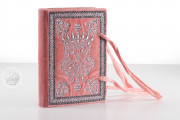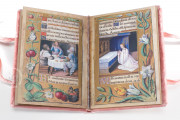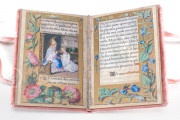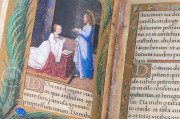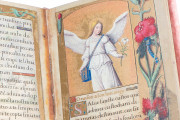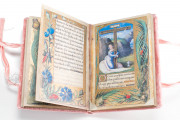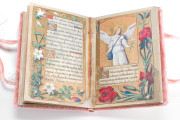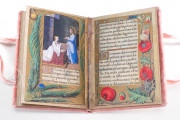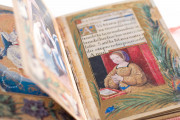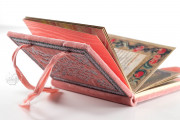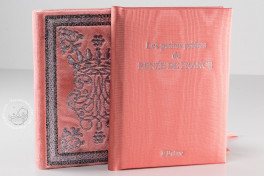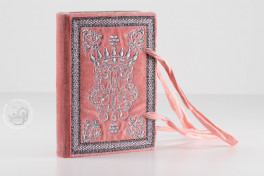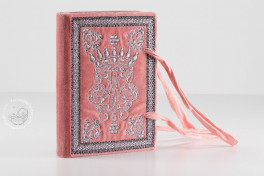The Perilous Journey of the Book
This little book of meditation shares a common destiny with the turbulent life of its owner. Illuminated in Paris around 1517, the prayer book was commissioned to aid in the religious education of the young princess Renée de France, daughter of the French king Louis XII and Anne of Brittany.
Renée later took her prayer book to Ferrara where she married Ercole II, Duke of Este in 1528. Long before her marriage, Renée had shown an interest in the rising movement of Protestantism. Her relations with Huguenots and Calvinists who took refuge at her court in Ferrara led to the burning of all her books in 1554, because the inquisition considered them heretic.
Only a few catholic books escaped the fire, among them our Flowers Prayer Book. After the Duke's death, Renée left Ferrara in 1560 and retired to Montargis Castle in France. For reasons unknown, she had to leave her little prayer book behind in Italy where it remained in the Este library until the beginning of the eighteenth century.
Mysterious History
The manuscript then secretly and mysteriously disappeared only to reappear again under unclear circumstances as late as 1780 when a librarian named Tiraboschi reintegrated it into the Duke's library, without however mentioning its origins.
The manuscript was then safely kept in the library until 1994. That year, the abbey of Montecassino proudly presented the book in an exhibition where it was stolen and has not been found to this day.
The Painter
Questions regarding the painter and the manuscript's date of origin have not been entirely answered as yet. However, its French provenance has been ascertained due to the style and language used in the last portion of the text. It can also safely be attributed to its owner, Renée de France, as the princess herself is portrayed in five of the miniatures. This leads us to assume that the miniaturist must have been an official painter of the court.
A Most Unique Present
In particular, the typology of the meditative prayers and the absence of Protestant thinking support the assumption that our manuscript can be attributed to the Maître de Claude and dated to the time around 1517. It can thus be presumed that Renée received the book as a present on the occasion of the coronation of her sister Claude who became Queen of France that year.
Whoever the painter may have been, the Flowers Prayer Book of Renée de France undoubtedly figures among the most precious and masterly painted prayerbooks of the early sixteenth century. These manuscripts continued to enjoy great popularity even after the invention of printed books and thus confirm the continuity of artistic taste rooted in and inspired by the Renaissance.
We have 3 facsimiles of the manuscript "Petites Prières of Renée de France":
- Libro d'Ore di Renata di Francia facsimile edition published by Il Bulino, edizioni d'arte, 1998
- Blumengebetbuch der Renée de France facsimile edition published by Faksimile Verlag, 1998
- Libro di Preghiere di Renata di Francia facsimile edition published by ArtCodex, 2014


